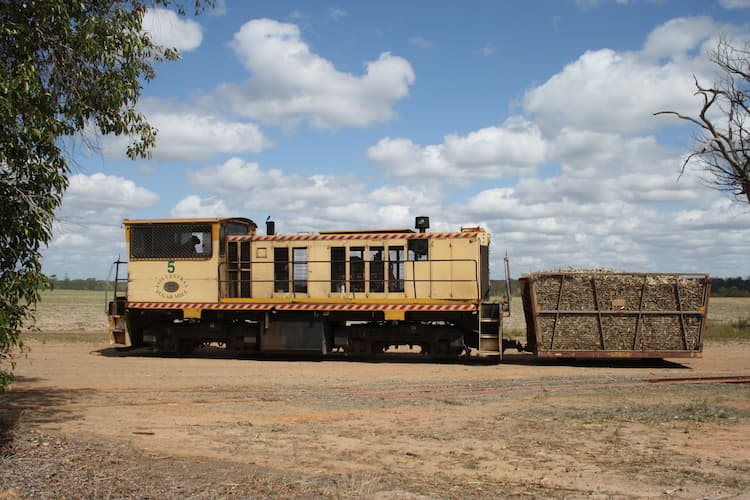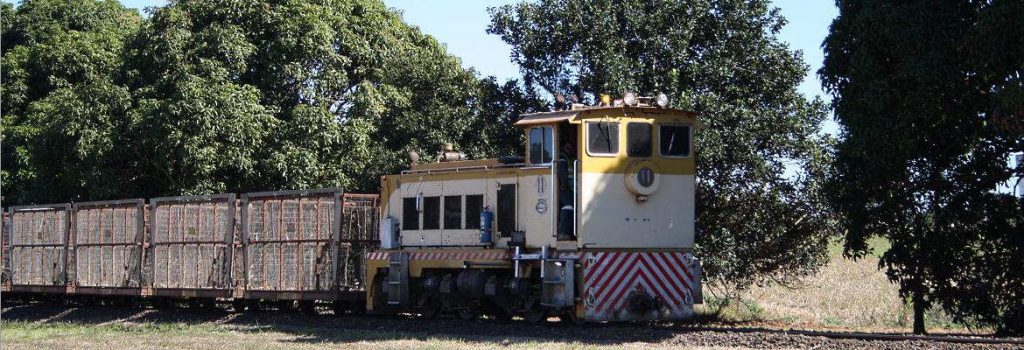Isis Central Sugar Mill
Isis Central Sugar Mill is now the first sugar mill you come to when you are travelling north of Brisbane.
Until the end of the 2020 crush it pulled in cane from the area around Childers and as far north-east as the Goodwood Road area. At the end of the 2020 crush the mill at Maryborough closed and, at the time this was written, Isis was processing cane cut from around Maryborough and south beyond Gympie.
During 2019 and 2020 Isis also extended it rail network towards Wallaville and Bullyard and trains began hauling cane on that part of the network during the 2021 season.
History
The Isis Cental Sugar Mill was built towards the end of the 1890s between the villages of Apple Tree Creek and Cordalba, an area roughly to the northwest of the Childers township.
At that time there were a number of sugar mills operating around Childers including Goodwood Mill, Knockroe Mill, Huxley Mill (owned by CSR) Doolbi Mill, South Isis Mill and the Good Hope Mill so there was plenty of competition for the new mill and the co-op of local growers who it.
Within 35 years all the competition was gone leaving the cane fields to the Isis Mill.

Bringing in the cane
The mill’s rail system collects the harvested cane in three ways:
- Cane bins are dropped off at numerous sidings throughout the network as the cane is being harvested in that area. Tractor-hauled Loadouts transport the cane straight from the harvester to the waiting can bins and when a rake is full a loco comes back to haul them away.
- In other places there are small yards where road trucks bring loaded cane bins in from areas that have no sidings. The loaded bins are exchanged for empty bins that are then hauled back to where the harvesters are working. Locos from the mill bring in more empties and haul the loaded bins back to the Mill.
- Cane coming from the area around Maryborough and further south is now trucked to a modern transfer facility on the outskirts of Childers and the cane is then tipped into waiting cane bins for transfer to the Mill.
A part of the Mills network of lines is built on the formation of an abandoned Queensland Railways branch line that ran through Childers and the Mill is now using more of that old formation to push their network further west towards Wallaville and Bullyard..

Locomotives
The Isis Central Sugar Mill’s locomotives currently consist of a small fleet of 9 diesel hydraulic locos to bring the cane in from the fields.
6 of the locos … numbered D1 to D6 … are rebuilds of Queensland Railways DH class diesel hydraulic locos. The rebuilds were carried out by Isis Mill (D1, D5 and D6) and Walkers Engineering (D2. D3 and D4).
For more on D1 click here and for D5 click here
The first 4 were rebuilt in 1994 while D5 was rebuilt in 1999 and D6 was rebuilt in 2002.
The remaining 3 locos are:
- D9 – an 0-6-0 diesel hydraulic built by Clyde Queensland in 1975
- D10 – a B-B diesel hydraulic built by EMB in 1977 and
- D11 – a B-B diesel hydraulic built by EMB in 1982
Currently all locos with the exception of D9 are in use hauling cane throughout the crushing season. In recent years D9 has only seen use on navvy trains.


Cane bins have no brakes and so the only braking force is whatever can be provided by the loco … and the brake van.
Isis locomotives are paired with a brake van that carries the same number as the parent loco.
The brake van is usually the frame and bogies from a scrapped loco. Extra weight is added to the brake van’s frame along with a small generator and radio control equipment that is linked to the locomotive.
Harvesting times
Exact harvesting times are hard to pin down because harvesting can depend on local weather conditions, drought, the amount of cane to be havested and several other factors too.
However, harvesting usually commences sometime in July and extends through to early December although some seasons have ended in November while others have gone through to late December.
Reference
All photos are from my collection
Zelmer, Lynn, 2007, ‘Isis Central Sugar Mill, Cordalba Queensland’, NGDU25: 2007, no. 497, pp. 16-19
Light Railways Research Society of Australia Inc website: http://www.lrrsa.org.au , Australian Sugar Industry Locomotives – February 2000
Facebook. Australian Sugar Cane Trains / Navvy Pics 2ft